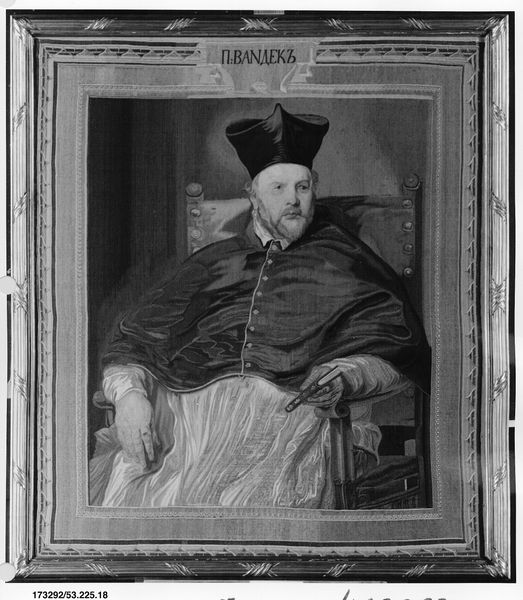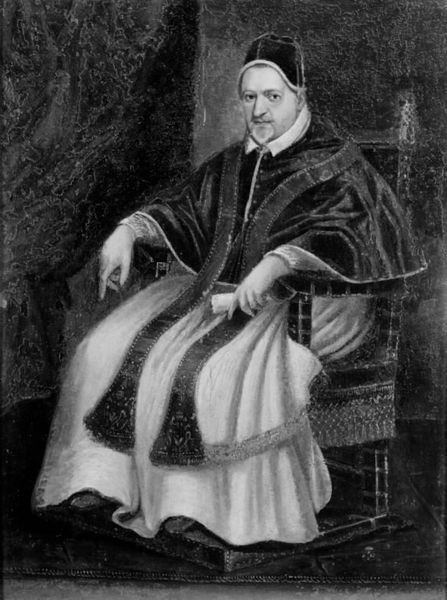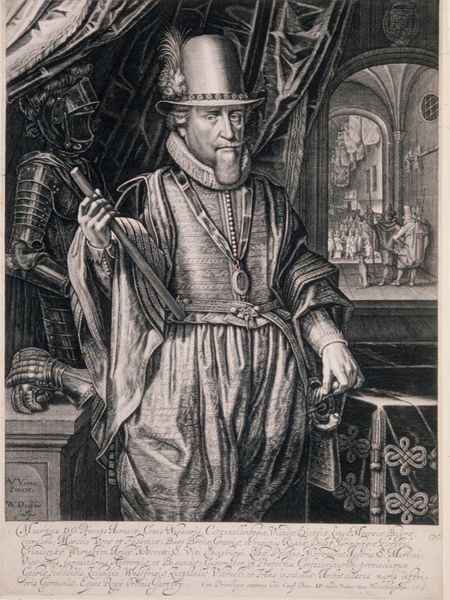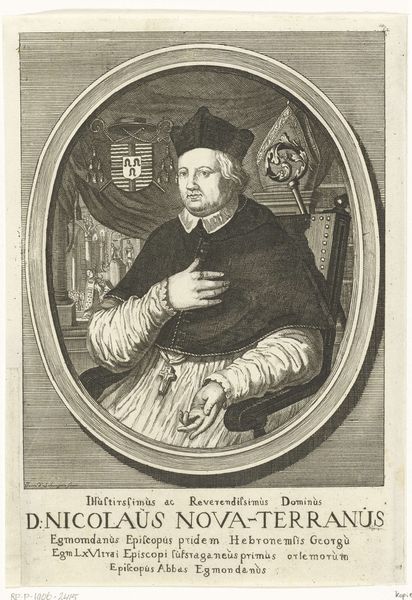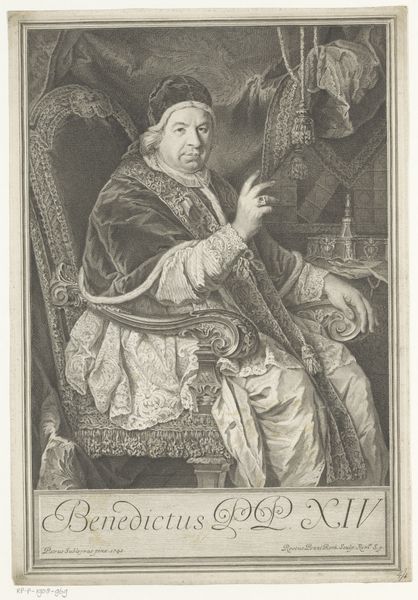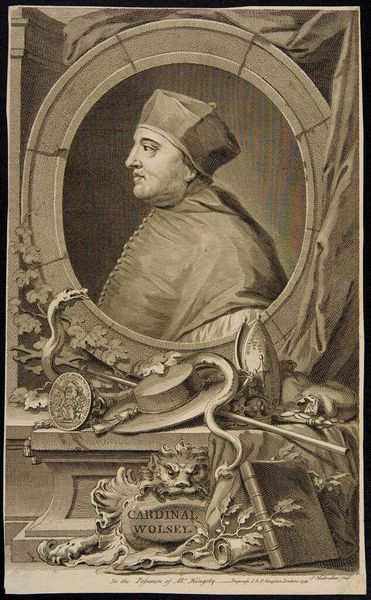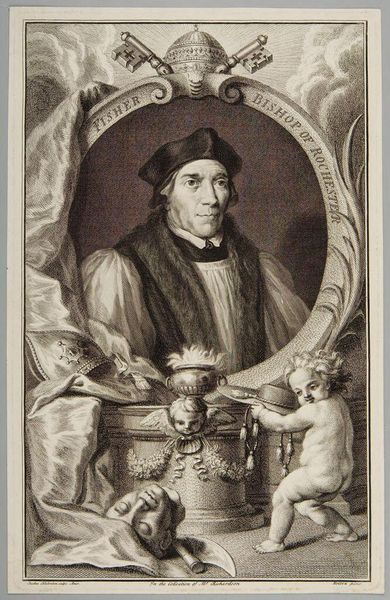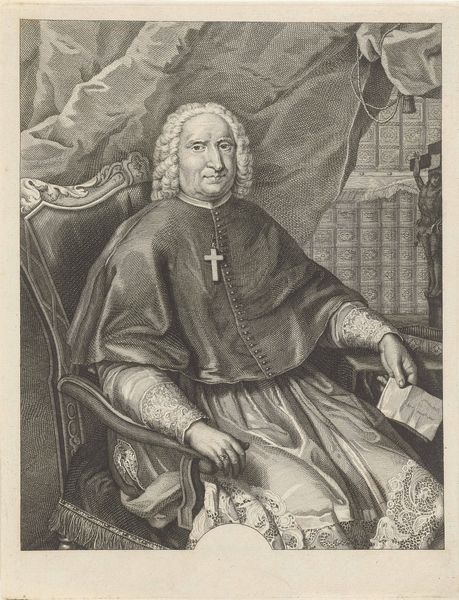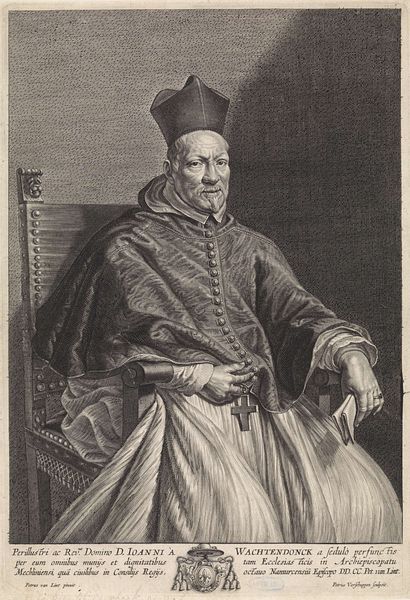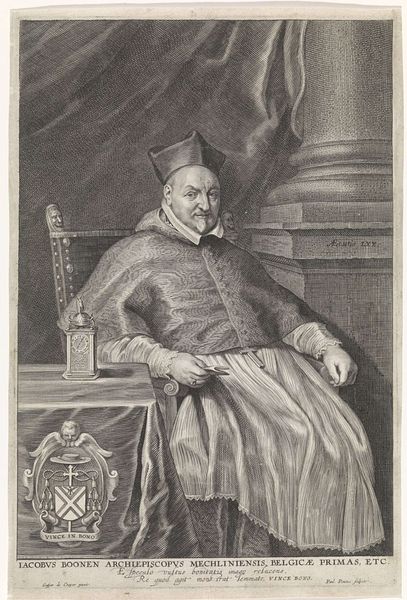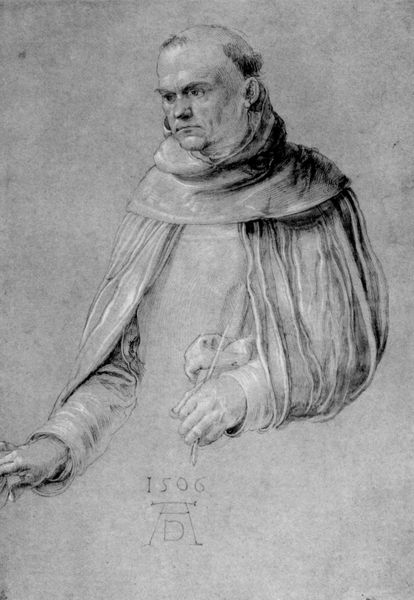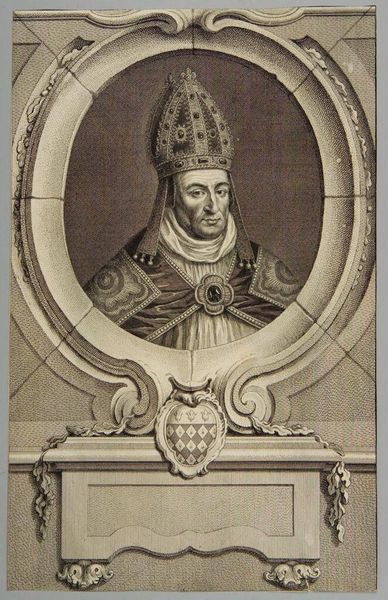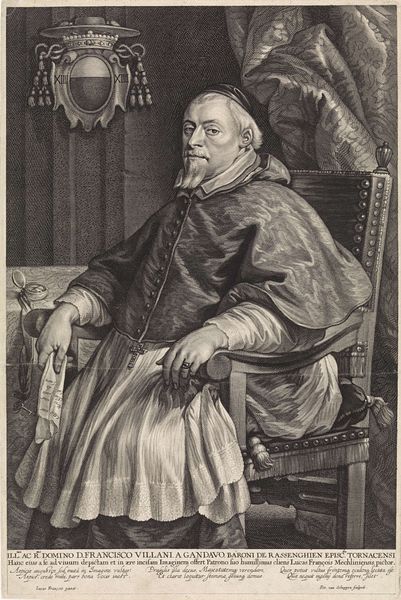
Portrait of Pope Clement XIII (Clemens Decimustertius Venetus Pontifex Maximus)
0:00
0:00
print, etching, engraving
#
portrait
#
baroque
# print
#
etching
#
portrait reference
#
male-portraits
#
men
#
tonal art
#
engraving
Copyright: Public domain
Curator: This engraving presents a "Portrait of Pope Clement XIII," identified in the inscription as "Clemens Decimustertius Venetus Pontifex Maximus." The piece is attributed to Giovanni Battista Piranesi, a name perhaps more known for his architectural renderings than portraiture. Editor: The composition is grand, even a bit intimidating. There's a distinct baroque theatricality, but something about his expression feels almost…vacant? Curator: Yes, while Piranesi captured a level of papal authority in posture and setting, you notice that vacancy precisely. Clement XIII's pontificate occurred during the Enlightenment. He resisted its progressive trends, making him symbolic for conservatives. Editor: You can feel that tension, this sort of clinging to old structures, in the rendering of those incredibly detailed vestments. All that embroidery—it feels like a weighty shield against the tides of change. But that vacant stare is such a contrast, maybe revealing some ambivalence in the face of unavoidable transition. Curator: It's an interesting visual metaphor for the papacy at a historical pivot point. What could symbols such as a Pope Clement embody for future societies facing disruptive cultural change? We see similar anxieties and cultural conservatives even today, wouldn't you agree? Editor: Absolutely. His ornate attire can be considered visual rhetoric, carefully composed and constructed to exude power during a moment of significant, existential questions. It shows how traditional institutions may need to continually evolve their tactics and methods to secure survival, and those adaptations frequently result in interesting or unexpected symbolism. Curator: It reveals that, for all the supposed timelessness religious art claims, these artworks are firmly planted within temporal society as commentaries of historical conflict. I believe the power of portraits relies heavily on these iconographic insights and not just the subject's expression. Editor: And yet, it is the complex contrast between surface and the apparent emotional depths (or lack thereof) that makes the work resonant. That perceived “vacancy” opens a space for speculation about internal versus external realities, relevant then and perhaps even more relevant now.
Comments
No comments
Be the first to comment and join the conversation on the ultimate creative platform.
